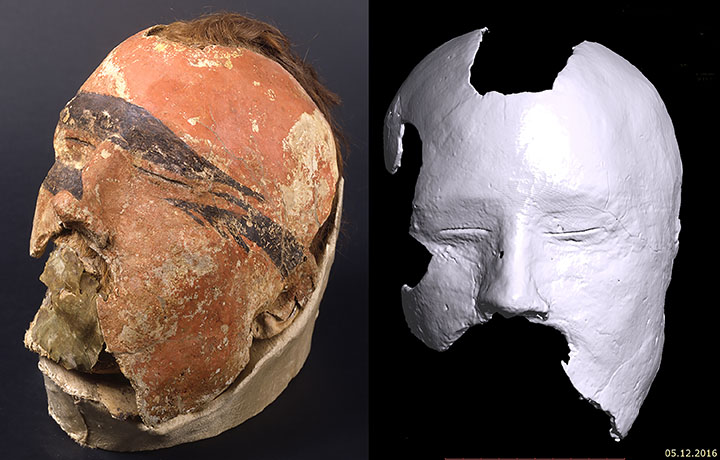Check out the face of a 1,700 year old Siberian. This member of the ancient Tashtyk culture, aged 25 – 30, was buried wearing a striking gypsum mask.
First unearthed in 1969, experts weren’t able to remove the mask for fear of disturbing the mummy’s features. So it took till last July to finally view his true appearance, thanks to modern CT scanning.
Speaking to The Siberian Times in 2020, Dr Svetlana Pankova said the mask was in fact “very close in appearance to the real face.” She works as curator at St Petersburg’s State Hermitage Museum.
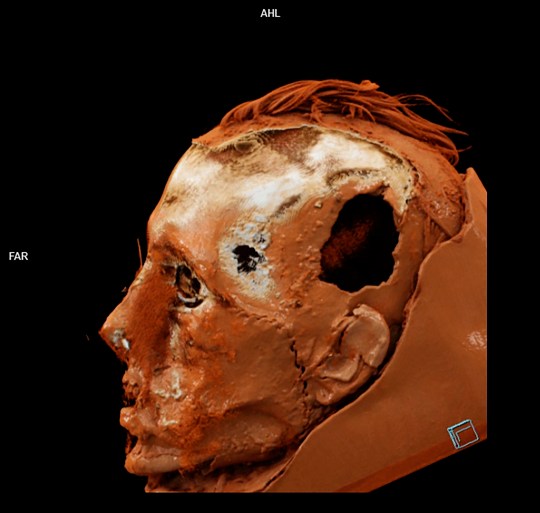
There were differences of course, most notably the man’s expression. Beneath the gypsum – gypsum being a soft mineral – he’s fairly serene. The mask quite literally paints a different picture. The Times describes him as having “a red punk look”. Black stripes are aggressively daubed on the surface. He’s also the first Tashtyk person to bear tattoos.
As the Metro reports, he has “hair worn in a pigtail fashion that would have been cut off before he was buried”. Why was it cut? The Tashtyk are known for their extensive rituals around death. A trim was just the tip of the iceberg it seems.
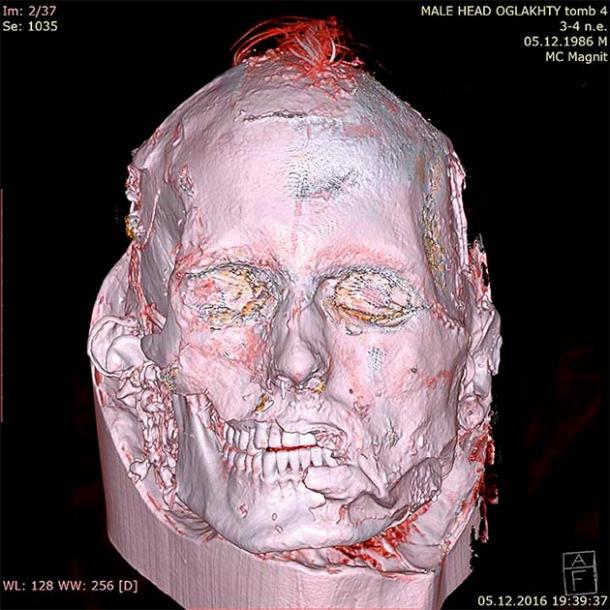
Parts of the ancient process involved surgery. Scientists were fascinated to find a scar running from the man’s left eye all the way to his ear.
The wound had been stitched, suggesting to them the culture wanted him to look his best, mask or no mask. It isn’t set in stone however. Further research must be undertaken to determine why the suturing happened.
That wasn’t the only example of him going under the knife. A 6 by 7 cm trepanning operation took place on the left side also. According to Dr Pankova, quoted by The Siberian Times, his skull was accessed “to remove the brain during an elaborate burial rite”.
The mask has lost part of the lower section, exposing the man’s teeth. Experts had 3 layers to work with – the mask, the face underneath and the dental details revealed by the ravages of time.
Living in Siberia’s Yenisei valley between the 1st and 4th century CE, the Tashtyk succeeded the Tagar. Russian archaeologist Sergei Teploukhov presented them to the world. The Yenisei Kirghiz people had a big influence on the Tashtyk, as well as the Chinese. Animal motifs are notable in finds.
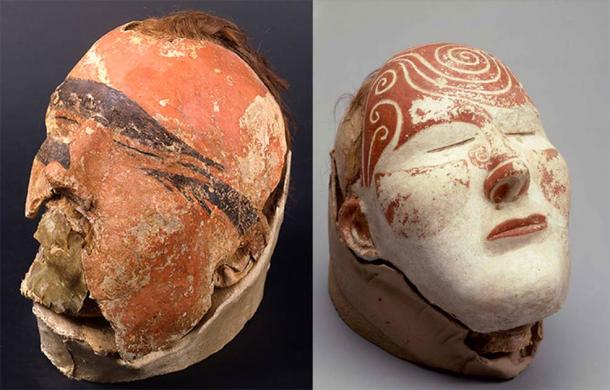
What was the identity of this man being prepped for the next world? The team aren’t sure. Found in a larch log tomb at a burial complex among the Oglakhty mountains, one thing they do know is he wasn’t alone. A woman and child were entombed with him.
All had fur coats when the discovery was made. The woman’s mask has a spiral and scroll design. The site had first been stumbled upon in 1902 by an unwary shepherd, who plunged into a grave and came face to face with the area’s long-dead inhabitants.
Accompanying the burial are a pair of dummies. The Siberian Times writes they were fashioned from leather and stuffed with grass. The head of one had deteriorated but the other is covered in red fabric with a facial representation. A piece of Chinese silk rests on top.
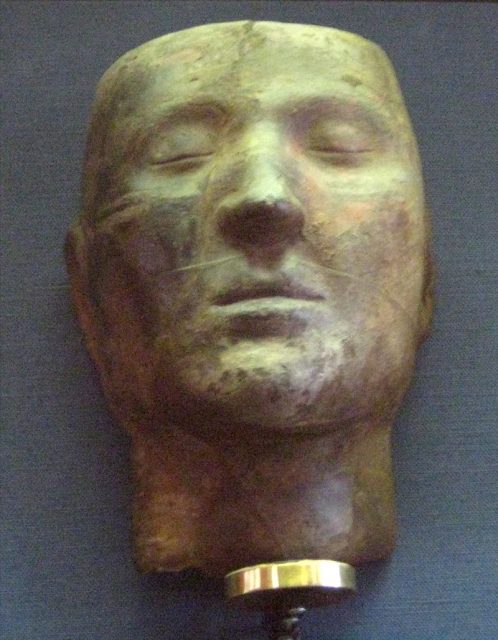
This practice of creating dummies is thought to reflect different approaches regarding the dead by two cultures. For example, Ancient Origins refers to previous evidence of male-focused cremation as a possible explanation.
The site adds while “the earliest bodies were simply buried in the ground”, subsequent corpses “were cremated leaving only large bones which were were put inside the dummy bodies.”
Another Article From Us: The Ancient Ghost City Of Ani “the city of a thousand and one churches.”
Getting a 3D visualization of Tashtyk Man helps fill the void left by ancient and largely unknowable cultures. The next step is to scan the poor souls he was buried with. A grim but compelling insight into life nearly 2 centuries ago…
